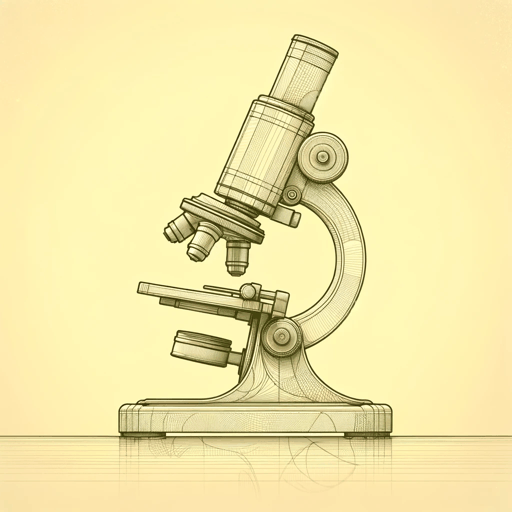80 pages • 2 hours read
John M. BarryThe Great Influenza
Nonfiction | Book | Adult | Published in 2004A modern alternative to SparkNotes and CliffsNotes, SuperSummary offers high-quality Study Guides with detailed chapter summaries and analysis of major themes, characters, and more.
Summary and Study Guide
Overview
The Great Influenza: The Story of the Deadliest Pandemic in History is a 2004 nonfiction work by American historian John M. Barry. It traces the history of the worst pandemic in world history, the influenza pandemic of 1918 and 1919. Barry approaches the subject with a broad audience in mind, placing the story of the flu inside the broader story of medical and scientific history. While focusing on the men who fought the pandemic, Barry also contextualizes the pandemic within American history and, especially, the story of World War I, the event that principally exacerbated the spread of influenza. The book was a New York Times best-seller and has been republished several times. This guide makes use of the 2018 edition published to coincide with the pandemic’s centennial. It includes a new Afterword by the author.
Barry develops the history of the pandemic by first focusing on the lives of the men who would combat it. He traces the history of medicine through the 1800s and argues that American medical knowledge severely lagged behind that of Europe until Johns Hopkins University was founded. In Part 1 Barry is especially interested in the work of William Welch, the first dean of the Hopkins School of Medicine. Welch, along with Simon Flexner, the first director of the Rockefeller Institute, helped modernize American medical education by building laboratories, creating more rigorous medical schools and research institutions, and recruiting or training the first great generation of American scientists, including those who helped fight the 1918 pandemic. Barry argues that Welch, Flexner, and others put American science on the map and, through their students, changed science forever.
In Part 2 Barry explains the origin of the pandemic. He traces it to Haskell County, Kansas, a rural community in the southwest part of the state. The virus did not last long there and would have likely died out except that soldiers from Haskell ended up bringing the virus with them to Camp Funston on the other side of Kansas. From there, the virus spread across the United States through soldiers and new army recruits. This second part also explains how viruses operate and what influenza is. As in other parts of the work, Barry assumes the reader is not well versed in medical concepts and makes ample use of analogies and metaphors to argue his point.
In Part 3 Barry discusses why America entered World War I in 1917 and the efforts the government made for total war. While the government sought to censor all information that might hurt the war effort, it also hired Welch, Flexner, and others to join the National Research Council to help prepare the army for war. The army’s surgeon general William Gorgas helped prepare the army to prevent a potential epidemic, although he and others were more concerned with measles and pneumonia than influenza.
In Parts 4, 5, and 6 Barry traces the rampant spread of the influenza virus throughout the second half of 1918. While the first wave was relatively mild, the second was deadly, killing nearly 300,000 Americans alone. As local leaders and newspapers either ignored the virus or misled the public on it, scientists trained by Welch and Flexner sought a cure, including Paul Lewis in Philadelphia and Oswald Avery in New York. Still, the virus traveled the world, wreaking havoc everywhere. Barry tells the story of the pandemic using a mix of primary accounts, hard data, and hindsight. He recounts the fear that traveled with the pestilence as well as the uncertainty the virus caused.
In Part 7 Barry follows the scientists trying to develop a vaccine by looking for ways of treating Pfeiffer’s bacillus, a pathogen then believed to cause influenza. Barry tells the stories of Avery, Lewis, and William Park and Anna WIlliams in New York, providing vivid descriptions of their lives and personalities. Each had a different approach and skill set, and each contributed insights and breakthroughs to various vaccines. The vaccines were not successful, though, and the virus lingered.
In Parts 8 and 9 Barry traces the end of the pandemic as it entered a third and fourth wave. Each wave became less deadly thanks to the virus mutating at the same time that researchers recognized that influenza was caused by a virus. But the pandemic still had long aftereffects for those who suffered as well as those who lost loved ones. Additionally, influenza struck Woodrow Wilson while the Treaty of Versailles was being negotiated, altering world history.
In Part 10 Barry follows Avery and Lewis as they continued to research influenza after the pandemic. While Avery successfully uncovered the role DNA plays in genetics, Lewis ended up a failure in the laboratory and ultimately succumbed to yellow fever in Brazil.
In the Afterword Barry provides new statistics about the pandemic’s death count, with some estimating that as much as 5% of the world’s population was lost to the influenza virus. Following the book’s initial publication, Barry served on an Obama administration committee of historians and scientists that sought best practices for another pandemic. Based on that experience, he uses the Afterword to offer advice for combatting and surviving the next pandemic, asserting that the most important factor is strong leadership, unlike that demonstrated by Wilson and others during the 1918 pandemic.


